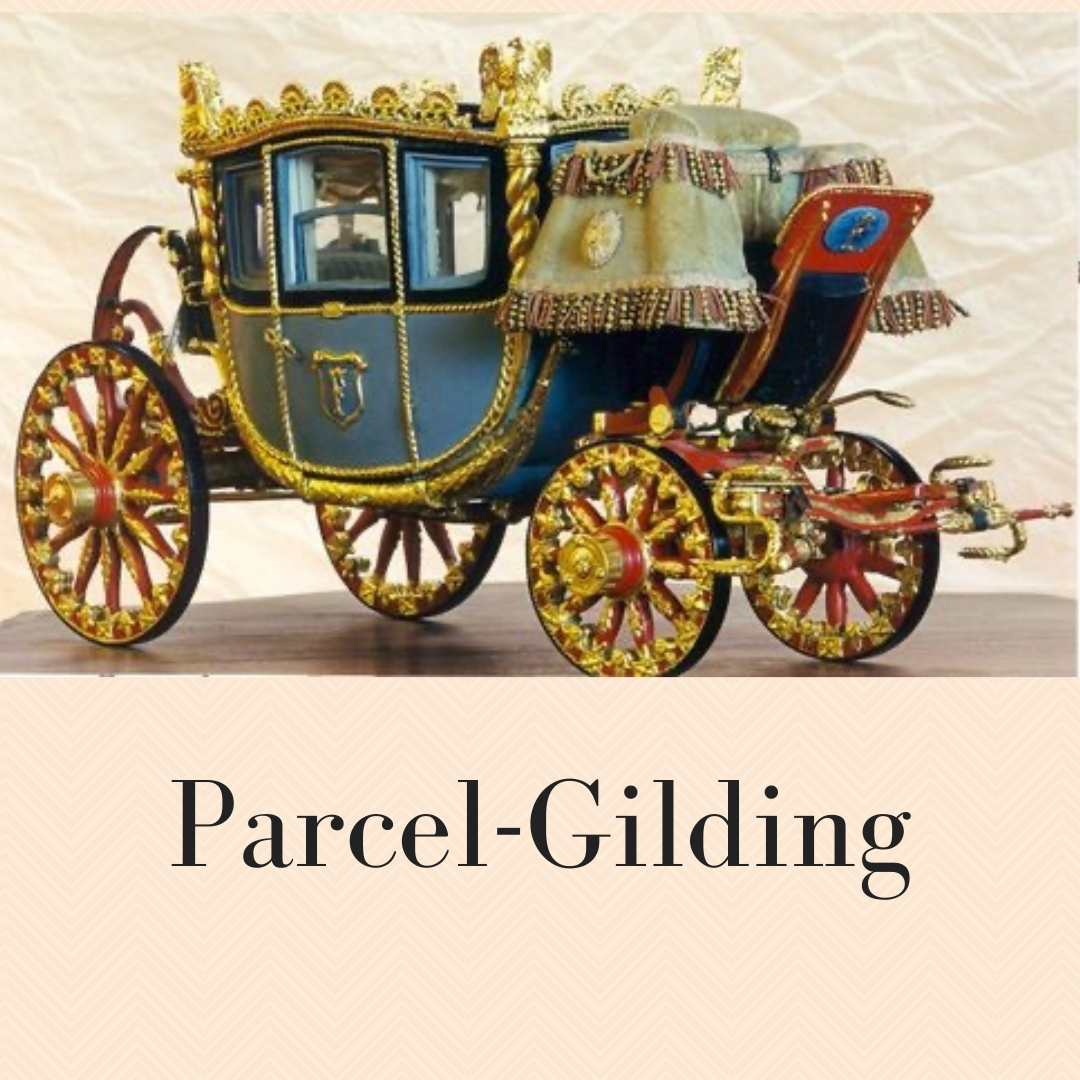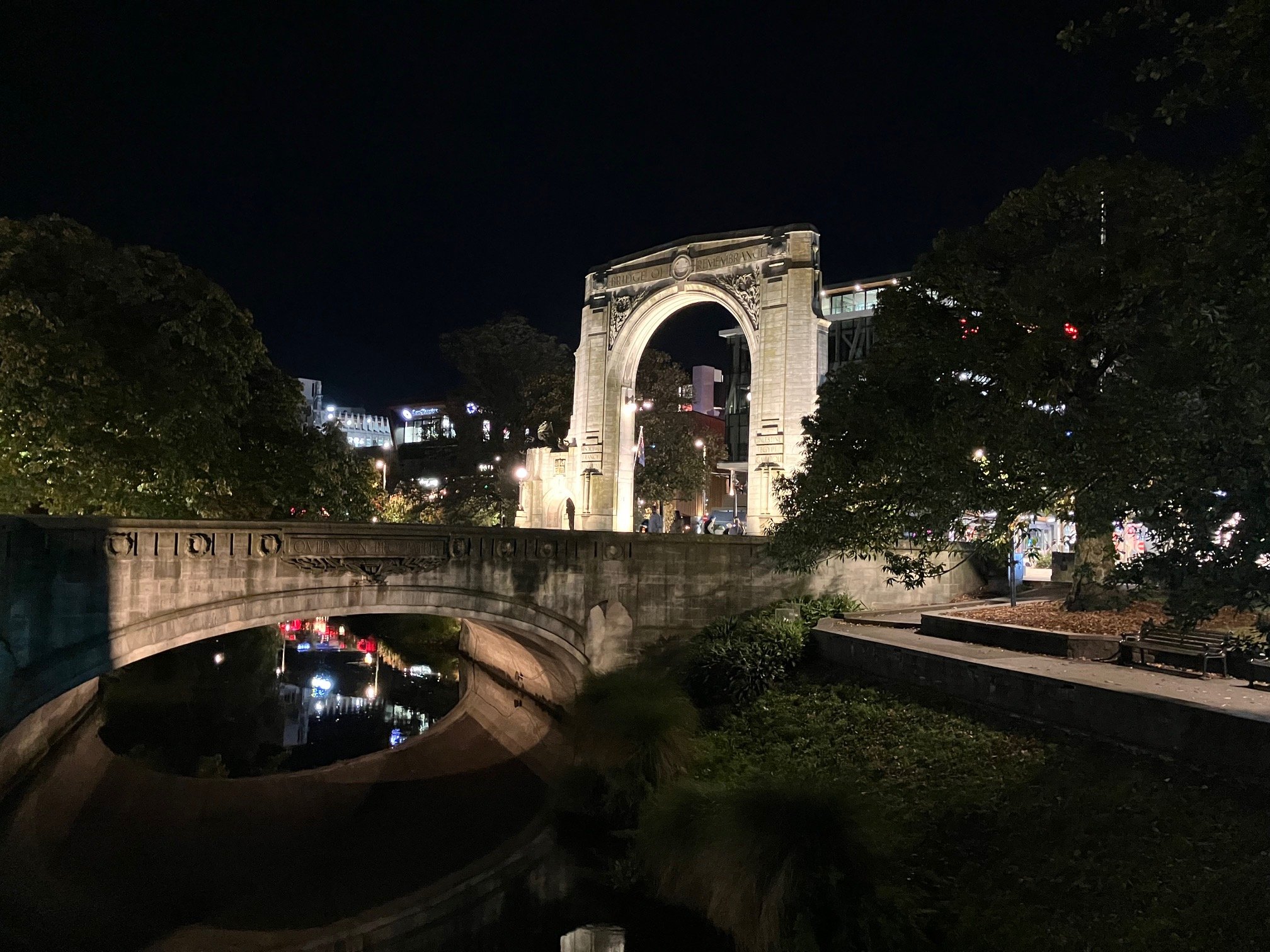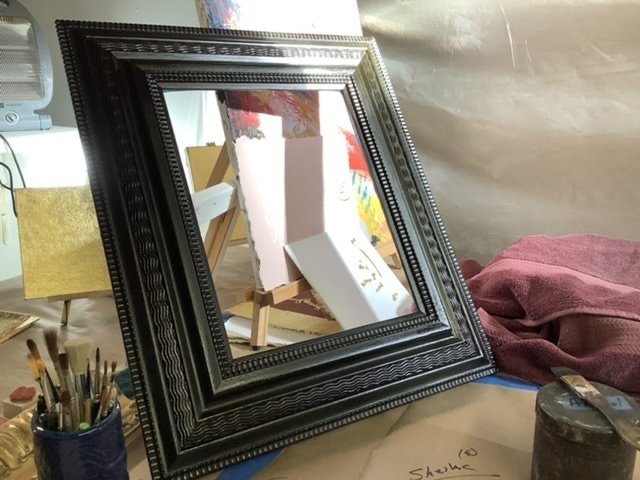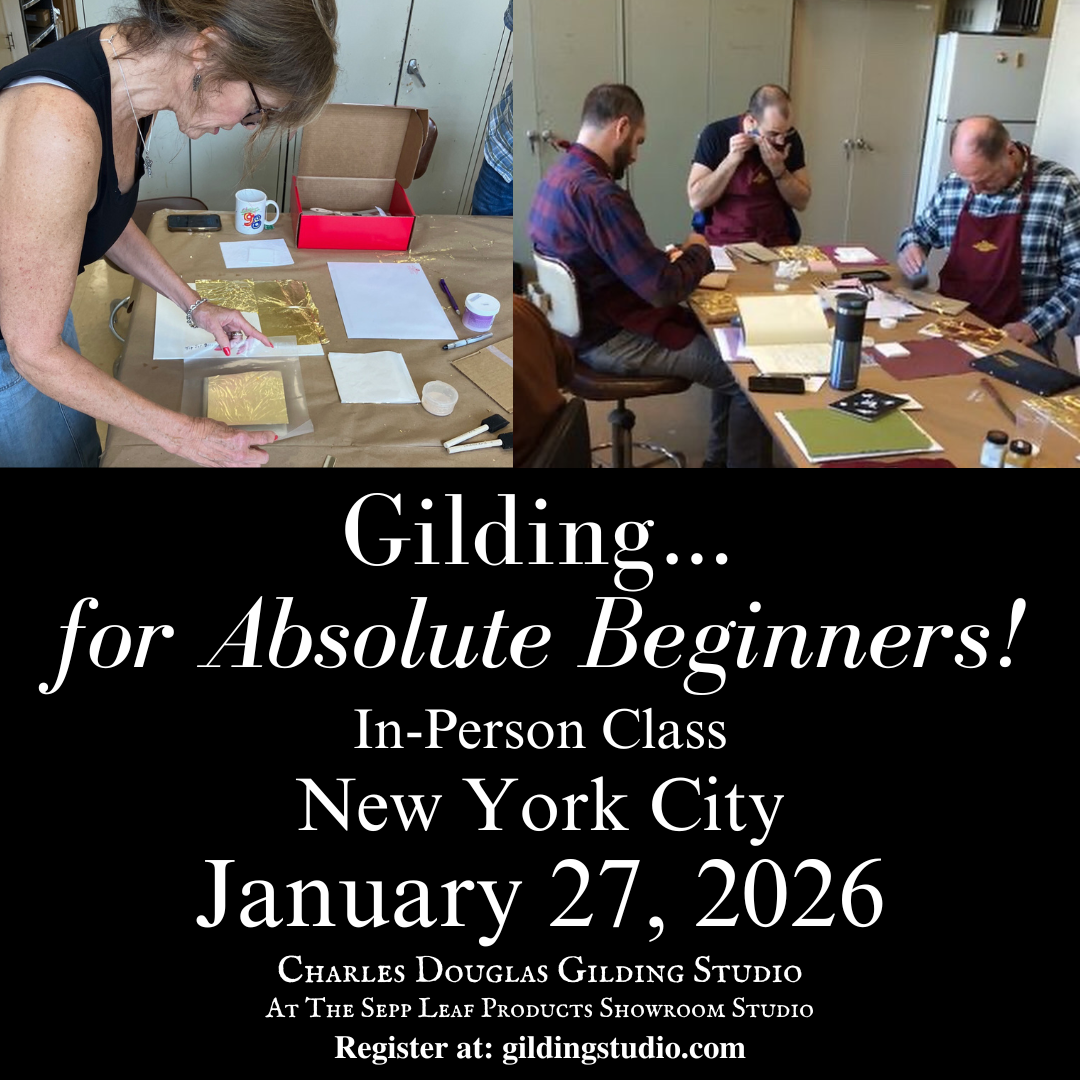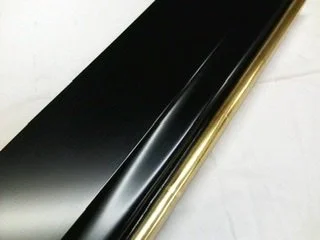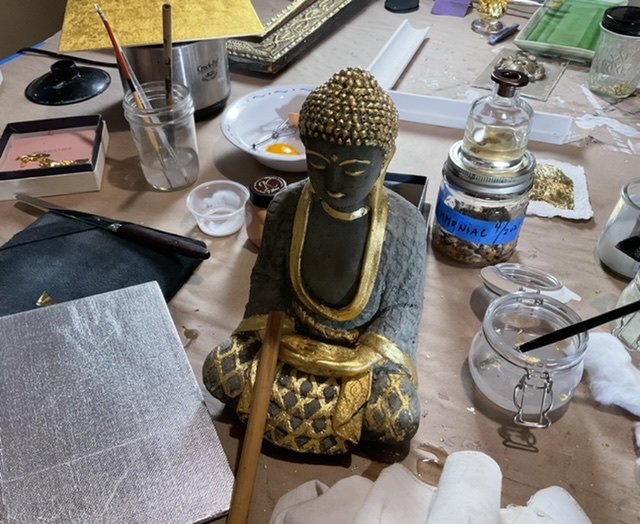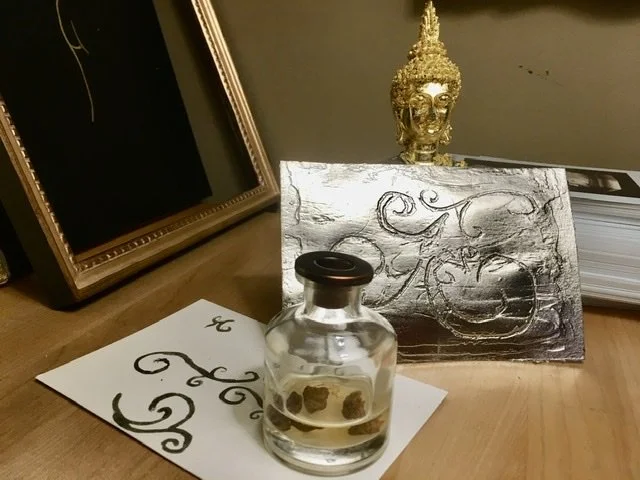Methods and Techniques of the Italian Renaissance
Prepare Your Own Size, Gesso, Bole, and Gild in Genuine 22k Gild Leaf!
Traditional Water Gilding
Traditional Water Gilding is the oldest of all the gilding methods, with the origins of gilding dating back over 4,000 years ago to Northern Africa. The sheets of what we think of today as gold leaf were in its earliest form more of a thick foil which would be pinned to an object for ornamentation, often with Spiritual significance.
Very little has changed over the years throughout the history of Traditional Water Gilding. A surface foundation we call gesso today is still comprised of an animal-based glue and filler - rabbit skin glue and calcium carbonate or calcium sulfate (sulphate in the British spelling) - with a clay that is mixed with the glue and applied for color over the white gesso informing the tonality of this thin metal while also providing a cushion underneath the gold to aid in its burnishing. Today we usually use agate stones in various shapes for burnishing gold and silver leaf which makes the leaf shine and compresses it into the surface making it more durable in its bond to the surface. Historically, however, a dog’s tooth was used for burnishing as described by Cennini in his late 14th Century Treatise Il Libro dell’Arte - The Craftsman’s Handbook. Two translations are available, the earliest by Daniel Thompson (1954 is the first Publication by Dover) with the newest (2015) by Lara Broecke. There are other earlier translations of this intriguing writing of Cennino d’Andrea Cennini with the intent of each new translation correcting the previous.
One aspect of gilding that has changed throughout its history is the thickness of gold leaf due to the malleable characteristic of gold to be beaten thin, most notably with the progressive use of machinery taking the place of hand hammering, although still used to some degree by the goldbeaters. I was very fortunate to witness this ancient craft of gold beating when I visited the Manetti Gold Beating Factory in Florence where I watched as ribbons of gold were beaten and ultimately cut into 3 3/8 inch squares and packaged for delivery. A wonderful experience to be detailed in another story for another day.
Water Gilded Panels Class…The Method of 13th - 18th Century Florence and Siena
The method of traditional water gilding can be seen on 13th and 14th Century Florentine and Sienese Egg Tempera and Oil painted Panel Paintings, a period which can be viewed as a point of reference for the online gilding class Traditional Water Gilded Panels…The Method of 13th - 18th Century Florence and Siena. Of all the gilding classes offered through Charles Douglas Gilding Studio this is the most extensive, meeting weekly for 12 weeks it includes the embellishment techniques of Punchwork and Incision (Granito), Raised Gesso (Pastiglia), and traditional Egg Tempera Sgraffito. This Online Class as well as the In-Person Water Gilding Workshops are also well-suited for the student of Iconography who share this long history through the Practice of gilding sacred Icons.
To grasp a full understanding of Traditional Water Gilded Panels students are taken through each step of this ancient method which include the following steps:
Chamfering the panel’s edges
Preparing the 10% Rabbit Skin Glue Size
Sizing the Panel
Applying and gluing Fabric to the Panel
Preparing and applying Hard and Soft Gesso
Sanding the Gesso
Preparing and Applying Raised Gesso known as Pastiglia
Preparing and Applying Clay Bole
Gilding in 22k Gold Leaf
Burnishing
Granito (Punchwork and Incision)
Sgraffito, a technique where egg tempera paint is prepared and applied over the gold leaf and designs etched through the paint to reveal the underlying gilding
Gilding Recipes For Gesso and Clay Bole
The recipes for the Rabbit Skin Glue (RSG) Size, Hard and Soft Gesso, and Clay Bole can be downloaded at the Charles Douglas Gilding Studio website under the Materials and Recipes Tab in the Navigation Bar. Students are shown in the online class how to properly prepare all of the materials and the panel for gilding in genuine gold leaf. The gesso recipe was passed onto me many years ago based on an old English approach and later presented to be the best for its stability in a paper Titled Physical Properties of Gilding Gesso by Marion F. Meklenburg from the book Gilded Wood Conservation and History, edited by Deborah Bigelow who I was fortunate to have taken a class with in 1998 on the concept of Toning Gilding which was around the same time as the publication of what remains my favorite reference books on gilding.
During the Water Gilded Panels class students gain an understanding of the principles of how the system of Traditional Water Gilding works for stability of the gilding on wood, adhesion of gold leaf to the clay bole, how the gold leaf is burnished, and how the various decorative embellishments of granito, pastiglia, and sgraffito are performed.
Handling Gold Leaf
Perhaps the most challenging aspect of learning to water gild is the handling of the extremely thin gold leaf which can measure as thin as 1/250,000th of an inch (less than the width of a human hair). Despite the extreme delicate nature of this beautiful and malleable of all metals it can be managed and tamed and with time and correct practice students can become adept at handling leaf. Students who are new to gilding will find handling 22k gold leaf a little easier than the higher kts.
Students are shown how to use the gilder’s main tools - the pad, knife, and ‘tip’, the thin-haired sable or squirrel hair brush used to pick up the gold leaf from the gilder’s pad where the leaf was cut with the gilder’s knife to the desired size off gold leaf with the knife. I also demonstrate cutting small pieces of leaf as tiny as 1mm for spot gilding, the practice of applying small pieces of leaf to spots where the gold may have been missed, generally from either a small air bubble or breakage in the gold.
Gold leaf is subject to various conditions which can be difficult to contend with especially for the beginner - static electricity in the room and on the pad or knife, knicks in the knife, insufficient skin or hair oil which is used to pick up the gold leaf (no, we don’t want static for this, no matter what you read elsewhere!), and often, that slight breeze from someone walking by that blows your leaf right off the table! But in time you’ll learn how to handle each of these situations and I personally guide you in each class that’s offered through demonstrations and discussion due to its importance.
Gilding The Panel
Each session for the Traditional Water Gilded Panels class involves 12 weeks of Study where students gather with me online weekly for 90 minutes. The first hour is dedicated to a specific step in the water gilding process for Panels with the remaining 30 minutes allowed for a Question and Answer period with the students, a dynamic aspect of the online classes where we can explore student’s questions in depth.
The preparation of the 12” x 12” Panel takes the first five lessons, from preparing the Size and Gesso to applying the five layers of silky smooth Clay Bole. We are then ready to begin gilding.
Both Single and Double Gilding are demonstrated in class where Double Gilding is simply applying a second layer of gold leaf over the first which provides for an absolutely fully covered layer of gold over the gessoed panel. The main objective of Double Gilding is to cover any areas where the initial single layer of gold leaf may have small holes from air bubbles, breaks in the leaf where the overall appearance of the gilding would be more uniform in its beauty by Double Gilding rather than simple spot gilding which can sometimes leave ghost images from general touch-ups.
A student’s gilding will become more proficient with time and better leaf-laying skills will leave fewer imperfections but there is sometimes the occasional mishap in water gilding where a second application of gold leaf can provide an overall more attractive appearance. These concepts of spot gilding, single gilding, and double gilding are all discussed and demonstrated during lessons 6-8 where the class is focused on laying gold leaf to the panel.
Burnishing, Granito, Pastiglia, Egg Tempera Sgraffito
…To Be Continued!



